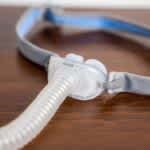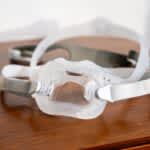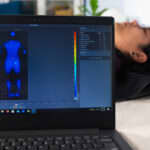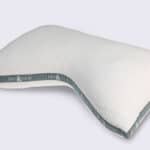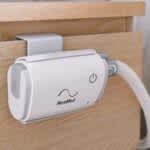If you wake up with aches and pains, your sleep position could be the culprit. Posture, or the position of your body while moving or at rest, can play an important role in your health and well-being. Posture also includes how you usually sleep, a position that your body holds for many hours.
The decision to sleep on your back, side, or stomach may put pressure on different parts of your body, like the spine, or affect some of your bodily functions, like digestion. So your sleep position can either help or hinder your health, depending on your condition. Finding the best sleep position for you will help to optimize your sleep and improve overall health.
Guide to Sleeping Positions

- 1 Identify your best sleeping position to improve your sleep quality.
- 2 Elevate your upper body if you have certain health conditions like acid reflux.
- 3 Sleep on your side to help with breathing issues like snoring or sleep apnea.
- 4 Avoid stomach sleeping if you experience back and neck pain.
There is a complex relationship between sleep position, sleep quality, and your overall health.
What Is the Best Sleeping Position?
The best sleep position is the one that promotes optimal posture and prevents pain. While there are benefits to each sleep position, there can also be drawbacks. The best sleep position for you can depend upon whether you have any health issues that are affected by your posture as well as your personal preference.
Sleeping on Your Side
Most adults prefer side sleeping, which is beneficial for many reasons. Sleeping on the side can promote better airflow and is often recommended to people who snore or have other sleep related breathing issues like obstructive sleep apnea (OSA). Side sleeping may also help prevent neck pain and lower back pain, as this position can alleviate pressure on the spine.
The decision to sleep on the left or right side can also depend on whether a person has certain health problems. For example, people with heart failure may find their breathing improves when sleeping on their right side. On the other hand, people with acid reflux tend to have worse symptoms when laying on their right side compared to their left.
Sleeping on Your Back
Back sleeping, or lying in a supine position, is less popular than side sleeping, but not as uncommon as stomach sleeping.
Although people with certain health conditions are usually cautioned against sleeping on their back, some find this position more comfortable and that it offers some benefits. For example, people with lower back pain may want to try sleeping in a supine position, particularly if they have not found relief from lying on their side.
Back sleeping can exacerbate snoring, obstructive sleep apnea, and acid reflux. Back sleepers with these conditions might consider elevating the upper body to reduce symptoms.
Some people may prefer sleeping on their back so they can avoid skin irritation or wrinkles from contact with the pillow. Both side and stomach sleeping put your cheek in direct contact with your pillow. While it’s normal to wake up with temporary wrinkles in the morning, repeated contact with the pillow puts stress on the skin and may contribute to wrinkles as people age.
Sleeping on Your Stomach
Adults are less likely to spend time sleeping on their stomachs, also known as the prone position. Sleeping on the stomach can add pressure to the spinal column, increasing the likelihood of back and neck pain. This position can also restrict movement of the chest, making it harder to breathe and causing the body to expend more energy to do so.
Best Sleeping Position for Lower Back Pain
If you sometimes wake up with lower back pain, you may be sleeping in the wrong position.
Lower back pain is a common ailment, affecting up to 84% of adults at some point in their lifetime. Sleep posture plays a significant role in aggravating symptoms, and some people wake up in the morning with back pain they didn’t feel the previous night.
Side sleeping in the fetal position can help alleviate lower back pain. Sleeping on your side with your knees up to your chest reduces pressure on your spine, opens up joints, and reduces pain. If you have lower back pain, it may be best to avoid sleeping on your back or stomach, which can put added pressure on your spine and worsen lower back pain.
Best Sleeping Position for Other Health Conditions
Sleeping position can also affect other aspects of your health. Finding the best sleep position for your health needs may help you reduce symptoms and improve the quality of your sleep. Your doctor may also be able to offer guidance for adjusting your sleep position or improving your sleep hygiene.
Obstructive Sleep Apnea
Typically, air passes in and out of the airway while a person sleeps. But for people with obstructive sleep apnea, the airway becomes obstructed as muscles and tissues relax during sleep, causing pauses in breathing, also called apneas. In some cases, lying in a supine position can increase the frequency of apneas during sleep, a condition called positional OSA.
Side sleeping or lying in an elevated position can reduce periods of apnea by allowing the airway to remain open. However, maintaining a new sleep position over a long period of time can be challenging. While devices are available to help prevent people from sleeping on their back, most people with OSA will need a combination of treatments to find relief.

Snoring
Snoring is the result of vibrations in soft tissues in the neck. These vibrations occur when muscles relax allowing soft tissues to flutter as air passes through the airway. Snoring is often a symptom of obstructive sleep apnea, though not everyone who snores has periods of disrupted breathing, a defining characteristic of OSA.
Like OSA, snoring may be improved by sleeping on your side rather than your back. However, changing your sleep position may not always provide long-term relief. If chronic snoring is causing you or a bed partner to feel concerned, consult with a doctor for guidance on additional treatment options.
Acid Reflux
Acid reflux occurs when stomach acid makes its way up to the esophagus from the stomach, causing heartburn and other symptoms. Acid reflux can be worse at night and interrupt sleep.
In addition to avoiding meals within two to three hours of bedtime, experts recommend that people with acid reflux should avoid lying on their back. Instead, many people find that sleeping on their side, particularly the left side, can reduce symptoms. Some may also find it helpful to elevate their whole upper body by placing a foam wedge under the mattress.
Heart Failure
Heart failure can happen when the heart becomes unable to pump enough blood to the rest of the body. Heart failure can cause a wide range of conditions to occur, including a buildup of fluid in the body. Fluid buildup in and around the lungs can lead to symptoms like shortness of breath and cough.
People with heart failure tend to feel uncomfortable while lying flat on their backs, as gravity can pull more fluid into the lungs, making symptoms worse. For this reason, certain sleep positions, particularly lying on the right side or sleeping sitting up, may be better.
Best Sleeping Position for Pregnancy
During pregnancy, most health care professionals recommend side sleeping instead of back or stomach sleeping. Sleeping on the left side is best because there’s less pressure on the vein that carries blood to the heart from the lungs, allowing the heart to pump more easily. This position may also improve blood flow to the uterus and fetus.
Getting into a comfortable sleep position during pregnancy can be difficult, especially as the fetus grows. As the fetus gets bigger, the extra weight can cause aches and pains, making it difficult to sleep on the side.
Using extra pillows and blankets may help to alleviate discomfort. While side sleeping, consider placing a pillow between your legs or at the small of your back, and have extra pillows or blankets to place where your body needs support.
Avoid sleeping on your back while pregnant; if sleeping on your left becomes uncomfortable, temporarily switching to your right side is okay.
When to Talk to a Doctor
Talk to your doctor if you’re having trouble finding the best sleep position or if you’re not finding relief from symptoms. Adjusting to a new sleep position can be hard for some people, but your doctor may be able to offer guidance or suggest products and devices that can help you maintain the best position for your condition.
Always be sure to let your doctor know if you regularly have trouble sleeping, daytime fatigue, or are struggling with everyday activities.
References
The Sleep Doctor Forum: Real Experiences, Real Connections
Continue the discussion on the Sleep Doctor Forum. Connect with experts and fellow forum members on CPAP, sleep apnea, and all things sleep. A priceless resource that’s free to join.







